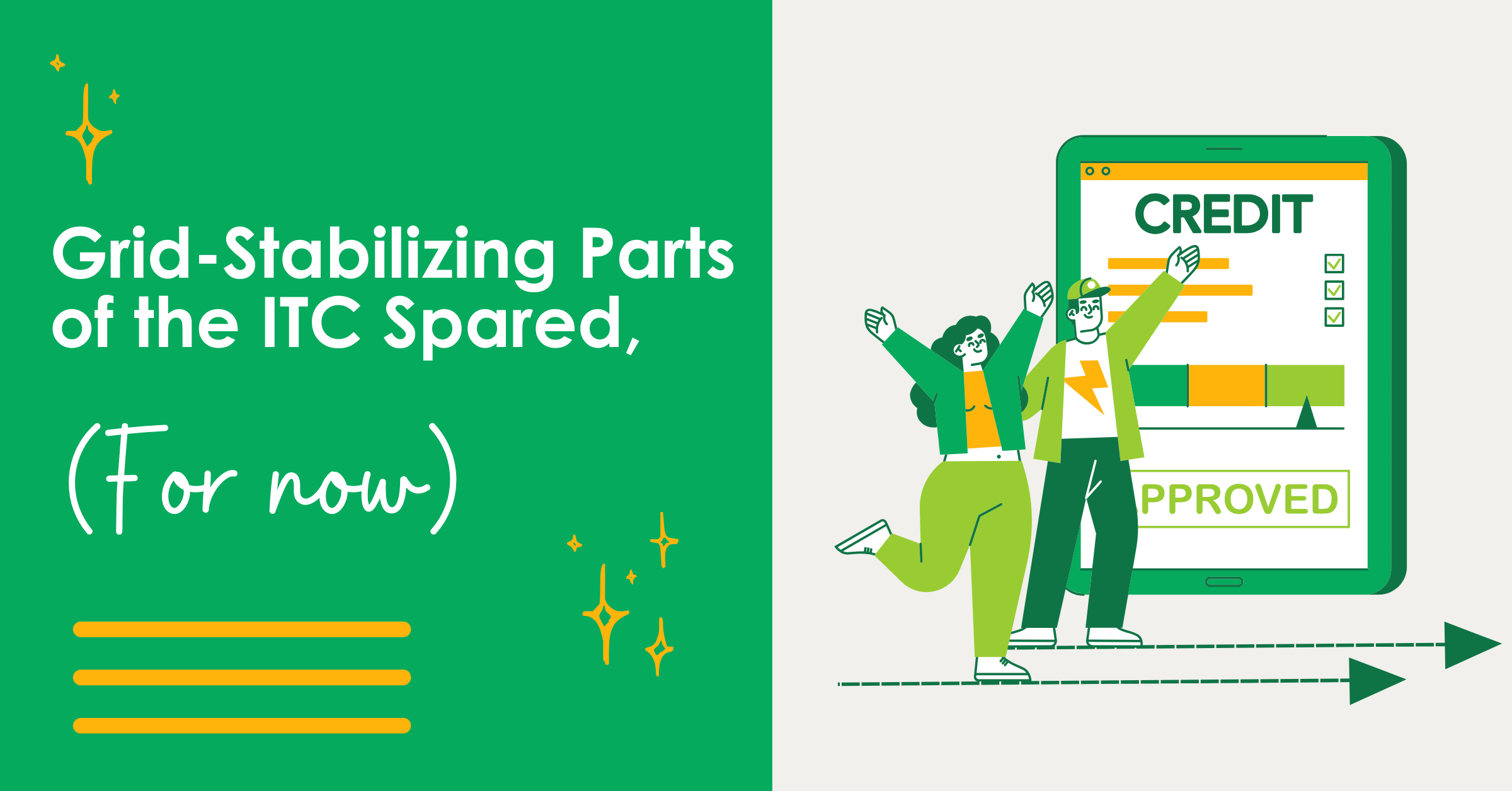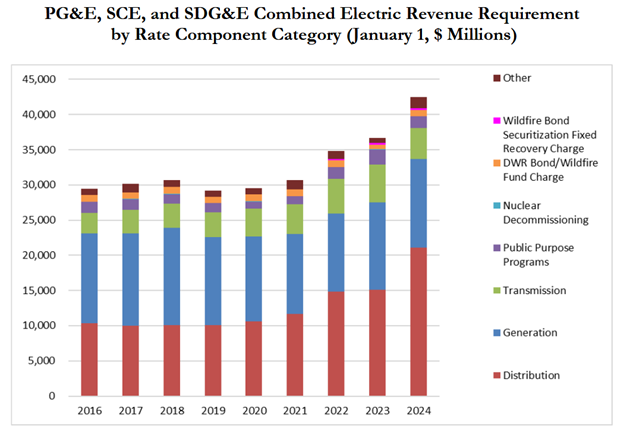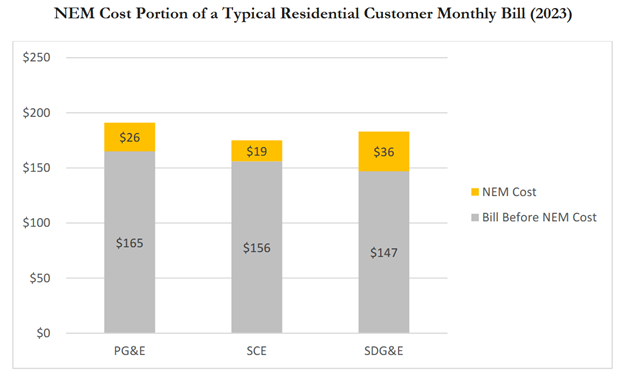
At the close of my Rant last week, Avoiding a Downshift Tailspin with the ITC On Storage, I suggested the Senate spare the investment tax credit (ITC) for electric and thermal energy storage in its version of the One Big Beautiful Bill (OBBB). Canceling the ITC for electric and thermal storage would doom the electric grid and force regional transmission organizations to call for rolling outages to prevent a full-blown blackout.
Lo and behold, on Monday, while the Downshift Rant was under review by my marketing counsel, I learned that the Senate Finance Committee did almost exactly what I suggested for the OBBB. They revised the ignorant slash-and-burn House version of the OBBB to extend the tax credits for geothermal, batteries, and nuclear power. Heatmap calls these resources “technologies that can provide power on demand around the clock.” I call them “dispatchable” technologies and add that batteries are typically only good for four hours. Nevertheless, four hours covers much of the shorter, peakier net load profile left by renewable supplies for other technologies to handle.
Differences in Energy Storage
I dare say this was a brilliant move because, as I explained in 2022, with data from the Midcontinent Independent System Operator (MISO), renewables are pushing higher, shorter peaks of net electricity demand on the grid. This is a good use case for toxic batteries but perfect for thermal energy storage. Wink, wink. Thermal energy storage is suitable for four times the cycles and lifetime compared to electric batteries. At the end of their useful life, thermal energy storage materials can be disposed of and recycled like common household recyclable materials. Nobody knows how to recycle or even safely dispose of the tons of toxins per gigawatt of lithium batteries. See Li-Cycle’s quest to recycle lithium-ion batteries ends in bankruptcy. How is that different than nuclear waste?
But I digress.
How Was Storage Saved in the OBBB?
No one knows the originator of the quip, “Even a stopped clock is right twice a day,” but I don’t think it applies to Senators in this case. How in the world did this ITC save for storage make its way back into the OBBB? Heatmap reported late last week, It’s Chris Wright’s Worldview. They’re Just Legislating It.
The article quotes Wright: “Viable paths to reducing greenhouse gas (GHG) emissions can only come from reliable[dispatchable] and affordable low-carbon energy technologies.” With that, I agree, Yoda.
Heatmap notes that Wright is especially critical of wind. For example, our first heat wave of the season over the weekend was accompanied by strong southwesterly breezes. These breezes helped power the grid this time. Will the wind be here in late July and August heat waves? I will let you know.
“You can build a lot of wind and solar, and then at night, the sun’s not shining, and then sometimes the wind doesn’t blow, and you have no energy. So to keep society running, you have to have a whole second separate energy system,” Wright said. Hmm, where have I seen that before? The TRC is calling. Has anyone seen 1979?
Kim Strassel, possibly my favorite columnist from The Wall Street Journal, profiled Chris Wright in February. She quotes Secretary Wright, “The goal is to fundamentally change the public perception of energy, to use that bully pulpit to end talk of ‘good’ versus ‘evil’ energy, to end the notion that more energy in America means more climate damage—those things just aren’t logical.”
Energy Storage and Load Management
The (pun alert) cool thing about storage and load management is that it is source-agnostic and cost-effective regardless of the generating source. And speaking of “good versus evil” resource, a few weeks ago, I listened to a podcast in which the guest lambasted the fact that customers in Entergy New Orleans would be asked to curtail loads rather than a top-down forced outage, which occurred. For the same reason that Chris Write notes, “you have to have a whole second separate energy system,” it is less expensive to have customers curtail than to build duplicative generation for reserve margin.
Rely on Experts, Please
Returning to Heatmap’s headline, “It’s Chris Wright’s Worldview. They’re Just Legislating It.” Frankly, I’d rather have someone who understands the complexities of our electric grid and generation fleet fix legislation than leave it to clueless politicians. I also greatly respect FERC commissioners like Mark Christie, who replaced Willie Phillips as Commission Chair. Willie Phillips is also a brilliant man. James Danly was another excellent FERC commissioner. I’ve witnessed all three of them speaking in recent years.
Force Breaks Things
The alternative to expert-driven policy is the politically forced variety, as the case is in California, where two years ago, prices surged past the rate of inflation (Danly mentioned in that post as well). Ten years ago, California’s electricity rates were 30% higher than the national average. Today, they are 80% higher than average. Gulp. While California has held the line on increasing electricity consumption since the late 1970s, using about half as much per household as the rest of the country, prices have risen rapidly in the last decade.
Figure 1 California’s Electricity Affordability Crisis
 Why are California rates soaring? The California Public Utilities Commission provides insights in its matter-of-fact report on soaring costs for the Governor and Legislature. Figure 1 lays out interesting facts. Soaring costs are not due to soaring natural gas costs (????), wildfire funds, or transmission costs. It’s almost entirely due to soaring distribution costs, which cover “power lines, poles, transformers, repair crews and emergency services, as well as certain wildfire mitigation costs related to grid reliability and safety, including liability insurance.”
Why are California rates soaring? The California Public Utilities Commission provides insights in its matter-of-fact report on soaring costs for the Governor and Legislature. Figure 1 lays out interesting facts. Soaring costs are not due to soaring natural gas costs (????), wildfire funds, or transmission costs. It’s almost entirely due to soaring distribution costs, which cover “power lines, poles, transformers, repair crews and emergency services, as well as certain wildfire mitigation costs related to grid reliability and safety, including liability insurance.”
Figure 2 California Investor-Owned Utility Revenue Requirements
 Net metering payments to residential solar haves also raise costs for the have-nots per Figure 3.
Net metering payments to residential solar haves also raise costs for the have-nots per Figure 3.
It reminds me of the eight immutable truths in Rant Revelations Unleashed, one of which is Physics Wins, and a quote from a grid engineer, “I won’t make law if you [lawmaker] don’t design the grid.”
Figure 3 Net Energy Metering Cost Shift
 Conclusion
Conclusion
This blog post justifies relying on energy experts, including the Federal Energy Regulatory Commission, which President Trump ordered to sunset its regulations – absurd. I suggest they even advise legislators and political appointees. As for Chris Wright’s alleged push to maintain the ITC for dispatchable resources, as I recall from my childhood days in the 1970s, Don Meridith would say on Monday Night Football, “It ain’t over till the fat lady sings.”

 Conclusion
Conclusion